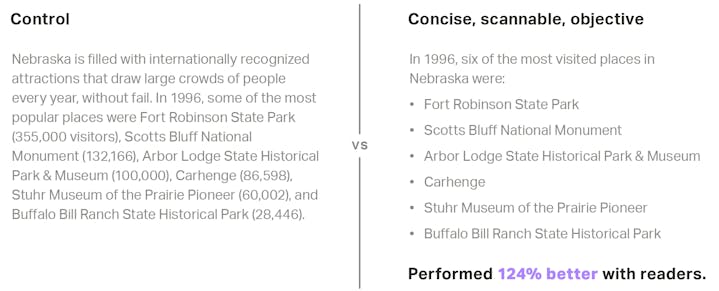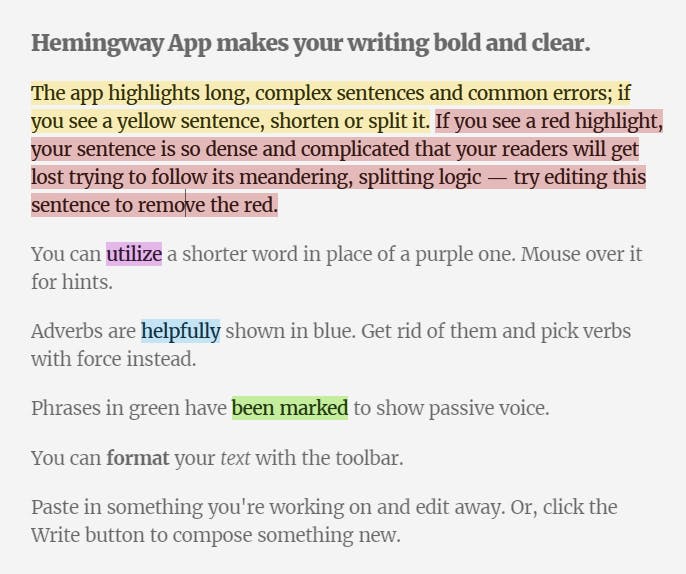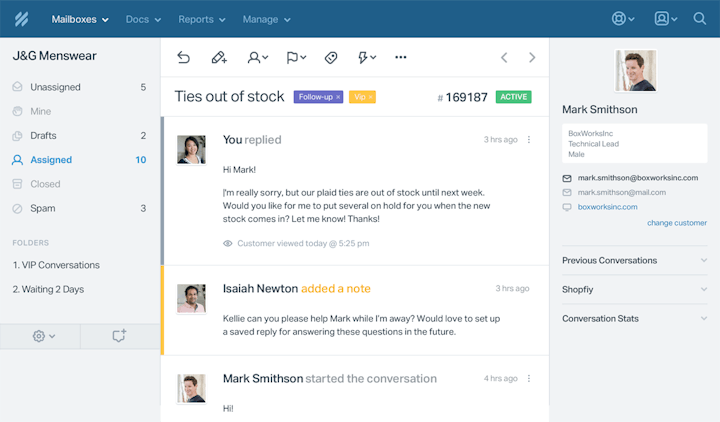6 Ways to Get More Mileage out of Your Help Content


While writing clear, coherent help content is a challenge in itself, after some trial and error you’re sure to have it down pat. The question then becomes, where do you go from here?
Just like you want to keep adding value to your product, you also want to keep adding value to your educational content. Tools and training are potent value propositions, and great help content does a number of important jobs for you and your customers. If you’re looking to go beyond frequently asked questions, here are a few ideas to try.
Try the customer support platform your team and customers will love
Teams using Help Scout are set up in minutes, twice as productive, and save up to 80% in annual support costs. Start a free trial to see what it can do for you.
Try for free
1. Make content easier to access
Self-service has undoubtedly grown in popularity over recent years. But as survey data in books like The Effortless Experience and Customer Experience 3.0 show, customers struggle with two main issues when it comes to self-service: “couldn’t find the answer” and “instructions weren’t clear enough.”
For the former, it goes without saying there’s little use in creating great help content if people can’t easily access it. You want to meet customers where they are, or more specifically, where they’re most likely to ask for help.
Make content readily accessible in-app
If a burning question strikes a customer while they’re in your app, it can be frustrating for them if they’re forced to switch channels rather than have the answer at their fingertips.
Companies like Mailchimp recognize this, and they’ve taken steps to move their knowledge base in-app. As a customer, I can personally say it’s been a valuable time-saver. There are a number of ways to implement custom solutions to do this job, but a Beacon modal can achieve a similar outcome by loading your Docs content with a few clicks.
A modal is useful because it feels native and doesn’t take up precious real estate inside your interface. Beacon also lets customers read, search, and browse your full knowledge base — videos and all — without having to leave your app, which helps keep problem-solving momentum and reduce effort expended to solve the problem. Customers can also send a message through Beacon should they get stuck or need extra help.
Share short tips in your dashboard
Another way to spotlight help content is by sharing short, practical tips from your knowledge base that customers might not instinctively look for. If you’re a Help Scout customer, you’ve probably noticed we publish these in the main dashboard with a small card.

Sharing docs relating to new features helps customers get the most out of your product, so it’s good to time these around new releases, whether you use the interface itself as the delivery mechanism or an in-app message. In the interim, it’s helpful to share content customers might not normally search for without a prompt, like keyboard shortcuts or a pro-tips doc on getting the most out of their reports.
Link to help content where customers can contact you
Your contact page is a good place to encourage customers with simple FAQs to check out your help content first. Companies like Basecamp take the extra step to assure customers they can get a fast reply from a real person should they have other questions or run into any trouble.

Perception counts for a lot, and these small touches assure customers that you’re using content as a way to save them time, not as a moat to prevent them from ever contacting you.
Another way for customers to get in touch is through embeddable tools. They can be placed anywhere on your site or in your app, which gives you the opportunity to let help content be a single click away on the right pages. Beacon works this way, as do live chat tools like Drift. Our customers often see an uptick in Docs usage when they install Beacon.
It has to be said that “more usage” doesn’t perfectly translate to “success.” But I wonder how common it is to walk into a customer-facing department and hear, “Customers are using our content too often!”
Use help content in your marketing
If your help content consists of more than technical documentation, such as best practices, it can be useful to include your docs wherever you normally publish.
We’ve linked to related help content in blog posts, shared video advice on Facebook and Twitter, included links to docs in our Release Notes, and even published a series on effectively using a help desk right here on our main blog. As Unbounce’s Ryan Engley noted, the line between marketing content and educational content can sometimes blur, and that isn’t necessarily a bad thing.

It can also be smart to work this into a campaign of sorts, especially on low-interrupt platforms like Twitter. Perhaps you’ve seen (or used) advice from a series like #SlackTips, or have learned about a small product detail through a short video shared on Facebook. Even if you don’t share a link to the actual article, broadcasting your help content across other platforms is a great way to distribute it.
2. Be deliberate about the content you create
In the early days you might exclusively publish new content in a reactive way. The journey from saved reply → help content makes a lot of sense when you’re getting started (and even much later on).
But it can be helpful to think about where content fits in your overall strategy for helping customers. Generally, you want help content to live in public in order to have an educational point of reference — answers that are valuable to your customer but don’t provide a lot of value to you when you have to reply to them over and over again.

Bill Price, former Global VP of Customer Service at Amazon, would firmly place this in the “Automate” portion of his Value-Irritant matrix.
Of course, the world is unrealistically organized in the land of matrices. If you produce an excess of help content to address everything “irritable” to you, you’re not really providing customer support and you’re sure to limit your exposure to important problems.
Customers who run into problems are already quiet enough. Presuming you publish great help content that does properly answer customer questions, you’re still not in the clear — for lots of problems, you want customers to get in touch, especially if the problem made for a frustrating experience on their end. If help content is used to deflect too many questions, you’ll reduce incoming contacts at the expense of learning.
On top of that, just because self-service is popular, that doesn’t mean it’s right for every customer concern. So it isn’t enough to spot an “irritable/valuable” trade-off and get to writing. You need to keep an eye out for conversations that customers might want to have with a real person and questions that are sub-optimally answered with content.
3. Use multimedia content
While text is supremely useful for getting a quick answer, it comes with a cognitive load and can be intimidating when it gets too long. Have you ever opened a textbook and let out a gasp at the columns and columns of tiny font? Too much text crushes spirits and comprehension.
So while written words can typically be consumed faster than any other medium — making it a core part of answering troubleshooting questions — other forms of visual content can be more accessible and more easily retained by customers.
What media you choose depends on the number of steps involved.

Screenshots: Use tools like Ember or Sketch to capture and annotate the exact steps customers should take.
GIFs: Use tools like Recordit or GifGrabber for lightweight GIF-making, or read this post by Andy Orsow to up your production quality.
Videos: These can seem like a larger time investment than written content and even visuals, but the cost of entry is a competitive advantage. You’ll be able to show and tell, allowing for better customer education, while many of your competitors won’t even bother with video.
Further reading:
4. Improve your written content
We touched on this in a previous post, but it’s worth mentioning again how concentrated writing can save headaches for you and your customers. Very little has changed from Jakob Nielsen’s famous study on how users read on the web: They don’t read, they scan.

When rewritten to be concise, scannable, and objective, a short passage on places to visit in Nebraska saw a 124% increase in usability vs. the control. In the case of help content, better usability equals better comprehension, a reduction in needless follow-up messages to support, and, as a result, happier customers. As software engineer Martin Fowler says, comprehensiveness is often the enemy of comprehensibility.
Another tip worth trying is to use writing tools to check if your prose is easy to read. Hemingway App, for example, can’t tell you how to write great help content. But it can highlight opportunities to simplify your language.

Tools like this are no substitute for a second set of eyes and good judgement. However, they provide a stern reality check should you get caught using jargon, passive voice, or ten-dollar words.
5. Make your content more consistent
Style is something that naturally develops as your team grows, but at a certain size, it should be codified so everything sounds like it’s coming from the same place. Here are a few ways to present your help content more consistently.
Start with a binary tone guide
If you’ve browsed Mailchimp’s public style guide, Voice and Tone, you’ve probably noticed how they describe their voice using an ideal adjective followed by the exception to the rule.
Fun but not silly.
Confident but not cocky.
Smart but not stodgy.
Why is this useful? Because it helps you draw the line. Part of defining your voice also means defining what you don’t want to project or communicate. Using a binary approach helps you find a “just right” consistency by pinpointing where each trait has gone too far.
Create a staging company

If you look at the product screenshots we use, you’ll notice a recurring company called J&G Clothing that always seems to be out of ties. They must be pretty popular.
In reality, this is our staging company — a fake business we use to demonstrate what Help Scout looks like and how it works. Another example — with an actual product to sell! — is Jeff’s Lemonade by product manager Jeff Vincent of Wistia. Jeff’s Lemonade makes an appearance in many of their help videos.

Staging companies are great for visual consistency. It’s often a good idea to use the same access level of user so the view is consistent, unless explicitly discussed in the article.
Staging companies are also be helpful for mentally getting outside of your own company and in the shoes of a “customer.” Having an ideal reader in mind is key for producing content that says precisely what it needs to say, so it’s good to imagine writing for someone other than your own team.
6. Use help content to target long-tail traffic
If Google search is a command line, then SEO is a way to help surface the best answer when prompted with a specific question.
Optimizing help content for Google is especially useful for #lazyweb questions customers have about your product — the questions they’re more likely to plug into their address bar than your website. Here are a few to optimize for:
When the search query and page don’t match. If someone searches Google for a feature you have, and what’s ranking is a page that lists a general overview of that feature (“Happiness Reports” —> “Our Reporting Tool”), you have a slight mismatch. In this example it’s not a terrible destination by any means, but if enough people are searching for it, shouldn’t you have a proper article? Although Google has done its best to hide incoming search terms, you’re just looking for a noticeably large inflow of search traffic for an unrelated or highly specific term. Is “(Your product) WordPress integration” bringing hundreds of visitors to the wrong page? Fix it!
Integrations with other products. For popular products, it’s often worth the effort to create separate app pages. But docs are still a great option because they help customers unearth available integrations, and they help buyers who are window shopping via Google find the answers they need. You can use product data as a starting point: What integrations are most popular with your current customers? Do you have help content written around how these integrations work and what they can do?
Searches around your competition. While you probably won’t win any of the big search terms with help content, you can address issues like importing, migration and comparative features with other products in your space. The added benefit is that you’ll also end up with a step-by-step guide for people who want to switch, which is useful for lots of prospects, not just those searching “alternative” terms.
When you know better, do better
Just like knowledge itself, a knowledge base can grow wilted and stale without upkeep. In our next part of this series, we’ll look at what you can do to ensure the content you publish stays current, even when your product is constantly changing.
Need more help planning, building and maintaining your own knowledge base? Our our knowledge base playlist will get you on the right track!
The Supportive Weekly: A newsletter for people who want to deliver exceptional customer service.


